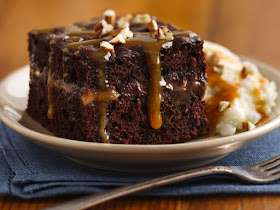I promised a tutorial for "Krazy Kats" while I'm developing the full pattern, and I wanted to get you started with how easy and fun this candle mat is to make. Unfortunately, you might not get away with making just one when your in-laws see how cute your alley cats turn out! So let's begin . . .
Photo of Unfinished Candle Mat
Here's How it Looks on the Drawing Board!
Step 1 - The Scalloped Background
In the pattern I'm releasing next week, you'll find a template for the scalloped background pieces you'll make for the front and back of your candle mat. The first step in creating your mat is to trace the scalloped template onto the non-shiny side of common freezer paper you can find in your grocery store. We use freezer paper because (1) it's cheap and readily available, (2) we can iron it to our wool or Woolfelt and it won't leave a sticky residue, and (3) it stabilizes the wool while you cut out your templates.
Place the freezer paper against your wool or Woolfelt with the shiny side facing the wool and iron it to your wool with a fairly hot iron:
Step 2 - Let's Make Some Cats!
As with the scalloped background, you'll just need to trace those templates onto the non-shiny side of freezer paper and then cut them out with sharp scissors. The following photo shows you what your freezer paper looks like when it is ironed to the wool. Again, the freezer paper will easily peel away and won't leave a residue!
Step 3 - Arranging the Pieces on the Background
Once you are done cutting out all the pieces, just peel the freezer paper away and position them on the background. In my pattern, I will provide a full-color photograph of the finished candle mat, as well as a master diagram so you can see how to easily position your template pieces. Some are small (like the eyes and noses), so if you are
like me this will be the most time-consuming part of completing your candle
mat, but it's still fun!
When you are satisfied with the layout, we'll use washable fabric glue to temporarily tack the pieces into place. If you make a mistake, remove the template piece and dab it with a warm washcloth to remove the glue.
Looks Hard, But It's Simple!
You can see by now that by breaking this candle mat down into simple steps, it makes it very easy to complete your own candle mat that will look adorable on your table or china hutch. And remember not to panic if you're no good at picking colors or if you don't want to shop for your own wool or Woolfelt, because the kit will be available next week too!
Step 4 - What's Coming Up Next . . .
Here's how our candle mat looks so far. In Part 2 of my Tutorial, I show you how to embellish and finish your candle mat with simple stitches, and we'll add the eyes, face details and some other surprises along the way. And I do mean the stitches will be simple! If you've never done embroidery stitches before like the blanket stitch or the french knot, my pattern will have very complete details on how to do these stitches, along with diagrams so you can get them just right.
I hope you've enjoyed Part 1 of my tutorial for "Krazy Kats". Stay tuned for the final Part 2 coming in a couple of days and for the pattern and kit release next week. Please leave me a post if you have any questions or if there is something you would like to see added to this tutorial. In the meantime, have a great week, and Happy Stitchin'! xoxo--Melanie




























